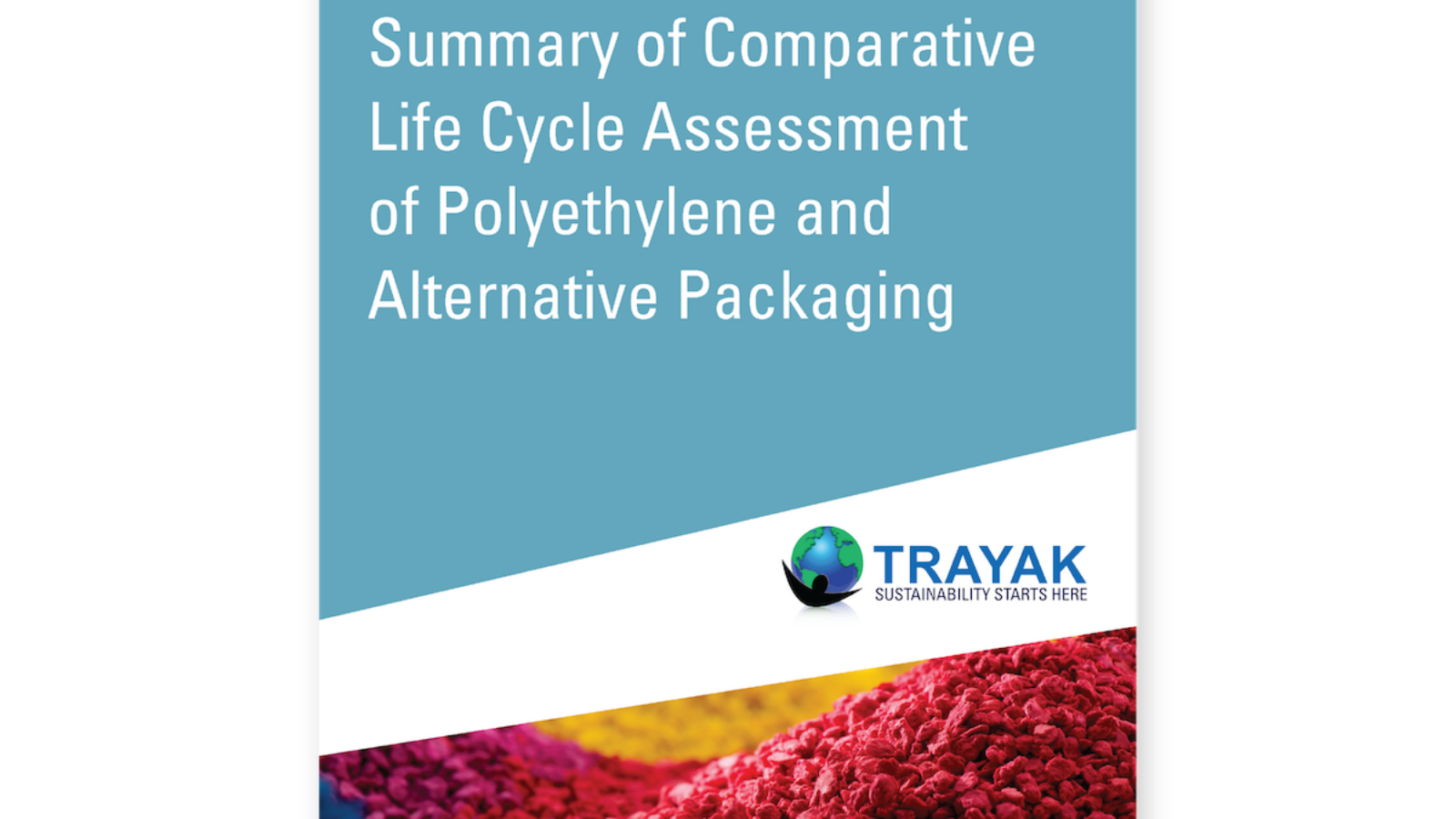MOTIVATION FOR THIS STUDY
A Life Cycle Assessment (LCA) to compare polyethylene (PE) based packaging and alternative materials (paper, glass, aluminum, and steel) was conducted by Trayak. The LCA study, which was commissioned by ExxonMobil, is intended to help stakeholders, including decision-makers, better understand certain potential environmental impacts of packaging materials. This summary shares the result of the study which compared plastic and alternative packaging materials following attributional LCA guidelines and in conformance with using ISO 14040 and 14044 standards. The study was critically reviewed by a panel of three independent experts in accordance with ISO 14044, clause 6.3 (ISO 14044, 2006) and ISO 14071 (ISO 14071:2014).
WHAT WAS STUDIED
This project compared materials for 13 packaged products across five prevalent PE packaging end use applications:
- collation shrink film for multi-packs of either water bottles or body wash
- stretch film for pallet wrap
- heavy-duty sacks containing either dog food or cement
- non-food bottles for cosmetics, shampoo, paint, or motor oil
- flexible food pouches for juice, candy, sauce, or spices
Packaging using PE and alternative materials in each application were modeled using EcoImpact-COMPASS. The following five potential environmental impact categories were assessed: global warming potential (GWP) with biogenic carbon uptake, GWP without biogenic carbon uptake, water scarcity, mineral resource use, and fossil resource use. Data collected included physical samples and supplier specification sheets. Subject matter expertise was used to determine representative packaging applications and typical industry formats. Multiple samples were used when available to calculate an average mass per standard capacity for the package.
RESULTS
The potential reductions, or increases, of impacts associated with the use of PE-based packaging relative to the alternatives (paper, glass, aluminum, and steel) for the 13 packaged products within the five packaging applications are shown in Figures 1-5. Positive values in Figures 1-5 indicate a potential environmental advantage of PE over the alternative materials whereas negative values show an advantage of the alternative materials over PE.
For the 5 potential environmental impact categories and 19 alternative solutions considered in this study, PE based packaging had a lower potential environmental impact in 77 of 95 (81%) of the packaged product comparisons. PE-based packaging showed lower potential impacts in 14 of 19 comparisons for fossil resource use, 15 of 19 comparisons for GWP with carbon uptake, and 16 of 19 comparisons for GWP, mineral resource use and water scarcity.


